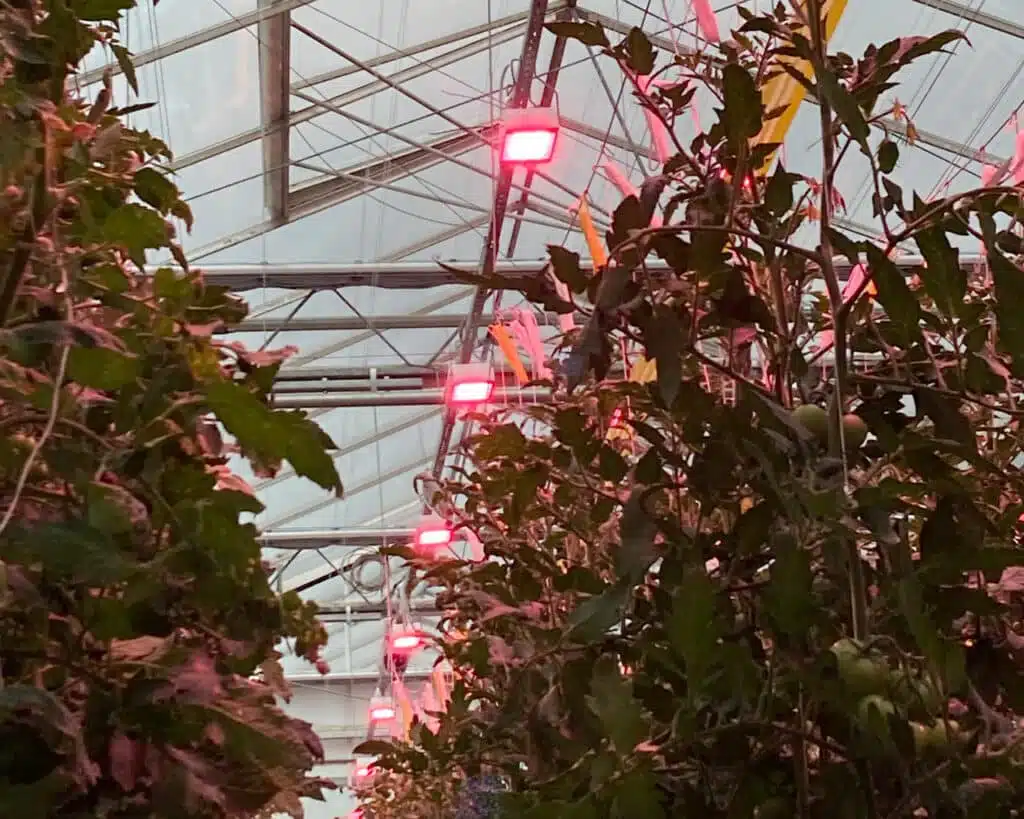Niels Damen of Climalux reports that it concerns the CLX-2 LED grow light with a 90-5-5 spectrum. What is special is the (patented) built-in fan that cools the grow light and blows the heated air vertically into the crop.
Last winter, an A/B test was conducted in tomatoes, in which the fixture ran with and without a fan. “Due to a technical problem – unrelated to the lamp used – we unfortunately had to stop the trial prematurely. Nevertheless, it did provide new insights. For example, it turned out that growers can save gas during the darkest period of the year, from early/mid-December to mid-January, by running the fan at 100 percent. It was striking that this strategy also resulted in a significant reduction in discoloration.”
HR varieties cause more problems
Discoloration is a serious problem in tomatoes under LED, says Ary de Jong. “It occurs in coarse bunches in various varieties, from various seed houses. This was the case again last winter. The problem has increased since the introduction of HR varieties.”
The fan of the fixture that was tested normally runs at 85%, but now De Jong ran it at 100% in December and January with the so-called boost function. “That costs a bit more electricity, but you get something in return. The fan is 4 watts, so 15 percent is not extremely much of course.”
De Jong compared the data from the trial with a group of growers. “We wanted to see: which of the growers suffered most from discoloration, which cultivation regime was used for that, and what was that like with us. The data shows: it is very clear that more water was absorbed in our trial thanks to more air movement and a lower RH. I also used much less gas, up to 30 percent, than a grower in the same period.”
Less evaporation, more discoloration
De Jong is convinced that the discoloration is related to evaporation. “If a plant absorbs less water under LED lighting due to the lack of radiant heat, growers will automatically heat more. The SON-T lamp, which we found very inefficient, has now been replaced by efficient LED lamps, but then we have to hang up hoses and use more gas. However, heating more does not solve the problem. Some tomato growers have dehumidification with hoses hanging, which does work against discoloration.”
How long would you have to keep up that ventilation at 100% to prevent discoloration? “We are talking about eight to ten weeks. The problem actually arises when you start harvesting the first two trusses, then the load on the plant is at its maximum. Then a nutrient deficiency can occur as a result of too little evaporation, we suspect. More research should show that.”
